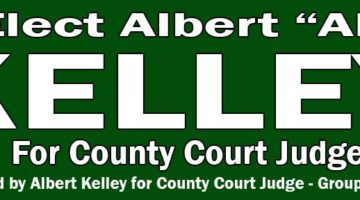Business Law 101 / What is Intellectual Property
By Albert L. Kelley, Esq.

Albert Kelly, Esq
Intellectual property refers to intangible creations of the mind that have value. Not every creation of the mind qualifies as intellectual property. Some things are not substantial enough to qualify. Intellectual property as a legal concept means those creations that are protectable, whether by registration or use. Also, the mere idea itself is not protectable. It must be made tangible.
There are four basic types of Intellectual Property: copyrights, patents, trademarks and trade secrets. Copyrights, trademarks and patents must be registered to be protected. Trade secrets are protected by not disclosing them. Many people do not understand the differences between these. Basically, copyrights are for artistic items; trademarks are for business identification; patents are for inventions and useful items; and trade secrets are, well, secrets.
So let’s break them down a little farther. Copyrights include photographs, paintings, songs, sculptures, books, movies, and even architecture. These are items that derive their value simply from their artistic design. If their design is dictated by their function, the design cannot be copyrighted. For example, a lamp design can be copyrighted, but the light bulb fixture cannot.
Trademarks are names, slogans, colors, sounds or any design that identifies the maker of a good or service. For example, in the 1980s, Owens-Corning trademarked the color pink for fiberglass insulation. In 1950, the NBC network trademarked the notes G-E-C for a television network. Also, the MGM lion’s roar has been trademarked. The golden arches were trademarked by McDonald’s. The initials IBM were trademarked by International Business Machines for a variety of business equipment.
There are actually four types of patents; the most common is the utility patent, which is for an invention, procedure or their modifications or improvements. There is also a provisional patent, which is a temporary issued patent, a plant patent for types of plants and a design patent which is similar to a copyright. Many of the items we use in or daily life have been patented and in today’s world many of them have multiple patents. For example, most of us use cellphones on a daily basis. In 2013, Samsung filed 2179 patent applications just for smartphones. As of January 2018, Samsung had over 75,000 US Patents. And they are in constant patent wars with Apple. I also mentioned life forms. Genetic research companies can patent DNA segments such as a genome that is associated with breast cancer- stopping all unlicensed research on that genome.
Finally, a trade secret is a business practice that is confidential and not disclosed to the public. For example, Google’s Search algorithm, the Twinkee recipe and how the New York Times determines its bestseller list are all trade secrets.
But how does this play out in real life? To give an example of all types of intellectual property, I am going to refer to Coca-Cola. Coca Cola has over 550 utility patents and over 175 design patents. For example the bottle shape of Coca Cola originally had a design patent as it is designed in a way that it can be determined by feel. The design of the bottle is now a registered trademark. The color red used on the bottle is also trademarked, as is the swoosh design. The recipe for coca cola is a trade secret and all of their advertising is copyrighted.
Can items be both a copyright and a trademark? Yes, although it is improper. If a person creates a unique design, they can register for copyright protection. If they then use the design to identify their business, they can also register the design as a trademark. However, if the Trademark Office deems that the design is being used in an artistic manner rather than as a designation of the source of goods or services, they may reject the application. Likewise, if the copyright office believes the design is being used to identify a business rather than as an artistic creation, they can reject the copyright application.
Al Kelley is a Florida business law attorney located in Key West and previously taught business law, personnel law, and labor law at St. Leo University. He is the author of five law books available through Absolutely Amazing e-Books and the host of “Basics Of The Law”, a weekly YouTube channel. This article is being offered as a public service and is not intended to provide specific legal advice. If you have any questions about legal issues, you should confer with a licensed Florida attorney.
[livemarket market_name="KONK Life LiveMarket" limit=3 category=“” show_signup=0 show_more=0]


No Comment